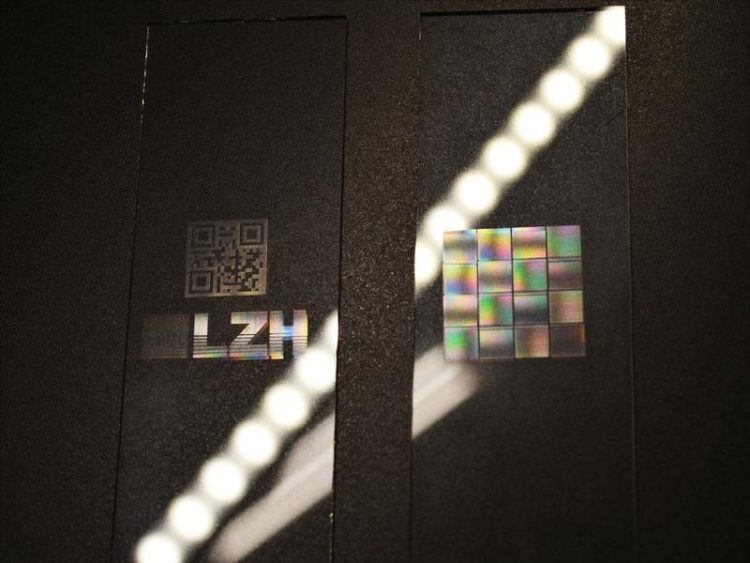Product piracy: glass marking fights counterfeiting

LZH logo and chessboard pattern with diffractive structures. Photo: LZH
Using a robust and industrially established marking laser, it will be possible to both individually and quickly mark products with a distinct certificate of authenticity.
This can be done during the packaging process. This is the vision of the project GLaSIDeE. Scientists at the LZH are working on a process for anti-counterfeit marking on both flat and curved glass surfaces.
Unique fingerprints
The laser marking process can be used to generate decorative writing, a number, or a two-dimensional bar code directly in the glass. The markings are only a few nanometers deep.
Flexibility is the main advantage, since each part can be individually marked, for example with a serial number, without effort or extra costs.
Up to now, there has been no clear identification process for markings on glass. Thus, in this project a special process should be developed with which each part is given its own individual fingerprint. The LZH is also developing a reading process for invisible markings.
In combination with each other, they will be able to reach a higher anti-counterfeit rate than conventional processes.
The project „Glass Marking using the Laser as a Safety, Identification and Design Element“ (GLaSIDeE) is subsidized by the German Federal Ministry for Economic Affairs and Energy within the Central Innovation program for Middle-sized Businesses.
Media Contact
More Information:
http://www.lzh.de/All latest news from the category: Materials Sciences
Materials management deals with the research, development, manufacturing and processing of raw and industrial materials. Key aspects here are biological and medical issues, which play an increasingly important role in this field.
innovations-report offers in-depth articles related to the development and application of materials and the structure and properties of new materials.
Newest articles

Properties of new materials for microchips
… can now be measured well. Reseachers of Delft University of Technology demonstrated measuring performance properties of ultrathin silicon membranes. Making ever smaller and more powerful chips requires new ultrathin…

Floating solar’s potential
… to support sustainable development by addressing climate, water, and energy goals holistically. A new study published this week in Nature Energy raises the potential for floating solar photovoltaics (FPV)…

Skyrmions move at record speeds
… a step towards the computing of the future. An international research team led by scientists from the CNRS1 has discovered that the magnetic nanobubbles2 known as skyrmions can be…





















